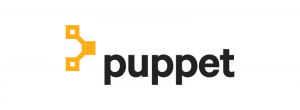Government IT departments have more than ever on their plates. New technologies and an increasingly mobile workforce create administrative challenges, while cyberattacks also constantly grow in number and sophistication. But while IT workloads have increased, budgets and the workforce are shrinking.
Without the proper security measures in place, agencies can’t effectively prevent or handle the more intense and frequent cyberattacks that come their way. Agencies need secure orchestration to manage the challenges of modern government IT work.
Secure orchestration is a method for managing all of an organization’s intersecting technology and coordinating how to build priorities and staff efficiencies into security. Because governments have so many applications, platforms and servers, the security systems required to keep networks safe are abundant and diverse. Secure orchestration integrates these tools and technologies to streamline and integrate security.
That means locking down applications or hard drives is no longer enough. The person becomes the network perimeter and agencies need visibility into how employees are accessing data and information remotely.
That’s where automated configuration management (ACM) comes in.
ACM is a systems engineering process for establishing and maintaining the consistency of a product’s performance. It also ensures the continuous upkeep of functional and physical security systems by maintaining their requirements, design and operations.
In other words, automated configuration management defines what agency systems should look like from an integration and security standpoint. Then, ACM constantly checks those settings to make sure they are maintained over time.
Agencies can’t depend on IT security departments that are short on time and resources to notice and mitigate every security flaw in a system – either when they are installed or as other systems are added.
Automation is crucial for ensuring a dependable level of security and authorization across systems. By using automation to simplify workflows and define security procedures, IT staff can gain full visibility into their security systems and define how they should be orchestrated.
Agencies can construct their desired standards for access, firewalls and services, and use automated configuration management to enforce those standards. With automated configuration management, agencies can build security into every step of the process.
For example, in provisioning new technologies, automation allows agencies to define their barriers and procedures, and ensure that they won’t falter with the wrong service. It provides a streamlined and quicker response to service requests and can cut activation or change times. By applying automated configuration management, the procurement process is more efficient and unflinchingly reliable.
In orchestration, automation is necessary to ensure the fastest identification of errors and the smoothest integration. By applying automation, human error is removed. Agencies can be more confident that their workflows and data are secure across processes that require changing applications, servers and networks.
Plus, when application servers can communicate with each other, agencies add another level of security. With automation, system access becomes more secure and – more importantly – traceable. Automation can standardize reporting of disparate systems, ensuring that security systems can be judged regularly and reliably.
This also saves time for security teams who won’t have to manually evaluate compliance requirements and documents. Automated monitors will send alerts if the standards that they set are compromised, and security teams can quickly diagnose and correct the issue.
To find out more about ACM and secure orchestration, watch our recent GovLoop Academy course, Configuration Management for FedRAMP Compliance.







These tools sound like real lifesavers Isaac! In particular, ACM looks like it will reduce a lot of pressure on government employees when it comes to cybersecurity.